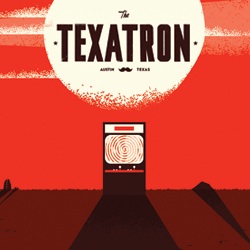RAGDOLL METAPHYSICS: GAME RESEARCH, GHOST STORIES, ALAN MOORE, AND ACADEMIA: THE FAR REACHES OF EDUTAINMENT
Academia has thrown up a bunch of interesting game projects over the past few years. As more gamers get into positions of academic usefulness, so that trend grows. Of course university and research groups have long been creating games with educational purposes in mind, but they’re now handling increasingly hefty budgets.
One of the most high-profile projects (and most obvious recent failures) was Indiana University’s Arden: The World Of William Shakespeare, which reportedly had a grant of $250,000. It was an experimental MMO which came about via the work of Professor Ed Castronova, author of Synthetic Worlds. Castronova wondered whether the creation of a genuinely educational MMO was possible, and set up the student development project to find out. Having spent thousands of dollars on Arden it was shut down. Castronova cited “a lack of fun”.
But I don’t suppose that was the only reason. Games don’t necessarily have to be fun to be engaging. Indeed “fun” seems like a trite expression in the face of some contemporary projects: games can provoke more than simple enjoyment. Look at the terrifying crypts of Stalker, or the strange sadness of Shadow of the Colossus. To realise that games ride on more than fun only takes a quick glance at the bigger picture.
One game researcher for whom “fun” seems inappropriate is the academically oriented team The Chinese Room, who are games researchers working for the University Of Portsmouth in the UK. Their medium, for now at least, is the Half-Life 2 mod, and the experiences they’ve created are peculiar investigations into the emotive possibilities of game design. They’ve realised that 3D games, with their claustrophobia and their immersive properties, can be spooky, scary and deeply evocative. (more…)
See more posts about: Offworld Originals, Ragdoll Metaphysics
RAGDOLL METAPHYSICS: CONCEPT RECOGNITION, OR WHEN ARTISTS FIGHT BACK
When Gearbox’s Randy Pitchford explained the new art style of Borderlands to the press, he described it as a “mutiny”. His art team had apparently gone back to their concept art assets and realised that, ultimately, their drawings and paintings had more character and appeal than the art-style that had ended up in the version of the game they had at that time.
Going against the prescribed direction of the project, the team had begun to prototype the concept art in the game, ultimately delivering a build that knocked the socks off their boss, and blew away the drab vision of Borderlands that they had been working on previously. Brave stuff. And I couldn’t help thinking: Well, about time! Isn’t most concept art actually better than what we get in the final game? Isn’t it, perhaps, about time to let the concept artists take the lead?
The results from Borderlands are quite startling. Observe:
Before:
After:
Dodgy quality of the first section aside, there’s no contest in the visual impact. With its reference to the concept art style, the game is more visually arresting, and, perhaps more importantly, it stands out from a host of gloomy shooters that all share the same visual effects, the same shiny bump-maps, the same metallic sheen. Hell, if Borderlands hadn’t been reinvented, I wonder whether you’d have been able to tell it apart from Id’s Rage… (more…)
See more posts about: Offworld Originals, Ragdoll Metaphysics
RAGDOLL METAPHYSICS: CHET FALISZEK ON VALVE CULTURE, WHY AI CONSTRUCTS ARE DEPRESSING, AND THE LARGER WORLD BEHIND LEFT 4 DEAD
Chet Faliszek, along with Erik Wolpaw, came to the attention of the all-seeing eye of the internet via Old Man Murray, one of the greatest gaming websites ever to have emerged from American bedrooms. As part of OMM, Faliszek became well known among a certain sector of net culture, including the guys at Valve.
Eventually, both Chet and Erik from OMM joined Valve’s development team, and now contribute as writers and designers. More recently, Faliszek has moved into the limelight as a spokesman for the Left 4 Dead projects. I decided it was time to sit down with him and see what was making the writer from Old Man Murray tick in 2009, with his thoughts on Valve company culture, the mixed messages and missed opportunities that spawned the Left 4 Dead 2 boycott, how the world of Left 4 Dead may or may not tie in to the world of Half-Life, and playing with AI versus playing with another real human being.
So you’re now doing this designer-spokesman role for Valve? We’re seeing you standing up and talking about the Left 4 Dead games at all the cons and stuff now…
Faliszek: Oh, well, I am writing dialogue too.
How is that kind of work meted out within Valve? Were you told you had to go meet the public?
Faliszek: Well actually I wanted to complain about our PR… But, you know, Doug (Lombardi, Valve’s main marketing man) is a smart guy, right, so it was unfair for me to sit on the outside and say “hey, there’s a problem”, I had to get in there and see how it worked. Doug is one guy doing all this on his own, which puts some miles on you.
What did you want to complain about exactly?
Faliszek: Well nothing, exactly, but I was confused about some of the choices we made when we were doing the Half-Life episodes. Of course this is a very open company: so we can just go ask. I can go ask Gabe about any of the decisions made by Valve as a company. So in this case I’ll just go ask Doug some questions, and try to understand what I need to ask. And Doug’s response was “oh, someone to help, thank you.” And that was it. (more…)
See more posts about: Offworld Originals, Ragdoll Metaphysics
RAGDOLL METAPHYSICS: A LOVE LETTER TO THE GOOD OLD FASHIONED JET PACK
Jet packs, for reasons of physics and safety, have never really been for this world, despite some heroic efforts by engineers and enthusiasts across the years. Instead, they have found their finest application in the virtual thrills and fancies of videogames.
Having been beguiled by the chrome-washed battle-future of Section 8 this weekend – the game is chock-full of jet-jumping combatants – I turned my easily-distracted mind to contemplating the gaming legacy of the jet pack. I wondered where history’s finest jet packs had flown, and where the most personal of flying machines might go next. So onwards, and to a brief history of the gamer’s “rocket-belt”. (Not exhaustive, obviously, but let’s see if we can hit some of the high notes…)
See more posts about: Offworld Originals, Ragdoll Metaphysics
RAGDOLL METAPHYSICS: ARMA II, AN ODE TO THE SURREALISM OF SIMULATION
There are times when the obscure corners of gaming seem to fade away and leave us with nothing but mainstream titles to chomp our way through. But not this month, and certainly not with the arrival of the awkwardly shambling simulatory behemoth that is Arma II. This is a soldier sim that pretty much defines how far the combat simulation end of gaming now is from the shooter roots of Doom.
Layers of controls, and clunky contextual UI, vast AI systems fighting across hundreds of miles of terrain: it’s about as close as we’ve come to modeling real war. And as a consequence it should come with a sticker on the box that says “this probably isn’t for you”. Arma II is as independently crafted as anything else out there, but your typical indie game it is not.
Bohemia Interactive Software, the Czech developer behind Operation Flashpoint, Arma, and the recently released Arma II, are one of the most singular and driven development studios you could name. Their energy and enthusiasm for creating an all-encompassing soldier sim – a game type that is barely imagined by other studios – seems to defy sense.
Why would you even begin a project of this scale, unless you were richer than Bill Gates? Understand this, and you’ll understand that their project is valuable simply by its uniqueness. In fact, I’d go further than that, and say that they are arguably one of the most important developers in the world today. Not because of accomplishment, because that always seems to fall short in their games. Rather, what is significant is their ambition. (more…)
See more posts about: Offworld Originals, Ragdoll Metaphysics
RAGDOLL METAPHYSICS: COULD THE XBOX 360 BE THE LAST CONSOLE YOU BUY? (OR, THE ACTUAL MOST IMPORTANT NEWS OF E3)
Oft-quoted industry analyst Michael Pachter, of Wedbush Morgan Securities, had something to say about E3’s announcements. All that games chatter was one thing, but Pachter thought the real news was all the other web media deals that Microsoft had made for the 360.
“The announcement that I thought was missed was the opening of the Xbox Live Dashboard interface to the internet,” Pachter told Gamasutra. “Later this year, Microsoft will allow members to access last.fm and to select music, to access Netflix and instantly watch films/TV shows, to access Facebook and interact with other friends, and to access Twitter and post/read tweets.”
Pachter argues that the gaming media entirely missed the significance of this announcement, which puts the 360 firmly in the same territory as Apple’s AppleTV, only with a library of awesome games. With so many 360s already installed around the world, MS have a good chance to become the default choice for web media on your TV. A colleague of mine – one of the big boys of the games media who definitely didn’t miss out on the significance of the this particular announcement – proclaimed that “Microsoft have won, and no one even said anything.”
My kneejerk reaction was to say that no, it’s not that this idea has been ignored – indeed it’s been bounced around for so long that I don’t think it really came as a surprise to anyone and, consequently, it didn’t get a great deal of coverage. But, far more importantly, this is gaming, and the platform which ends up having the best library of games will win. (more…)
See more posts about: Offworld Originals, Ragdoll Metaphysics, Xbox 360
RAGDOLL METAPHYSICS: MILO AND KATE, OR ARTIFICIAL PEOPLE ARE THE NEW GAMES
Microsoft’s motion recognition system, Project Natal, presents an abundance of possibilities for the future of videogames. The discussions arising from the abolition of the physical control device were one of the highlights of E3: a chance to see entirely new game mechanisms, and to break down the barrier that seems to have been created by complex interfaces.
But it’s the appearance of Milo – a simulated, on-screen boy who responds to human interaction – which is perhaps the most telling event. For sheer novelty alone he stands out: he is a modern day automaton, a simulation that we can’t help looking on as a little bit alive.
This specific direction of Natal tech also suggests a number of futures for videogame evolution. It’s moving towards the interface that human beings most readily understand: language and interaction with other people.
What’s critical about Milo’s unveiling is that he’s tied to a new technology which allows a game console to recognise users, and respond to physical cues – movement, speech, even physiognomy. The artificial person as a character in our everyday gaming lives is suddenly just a little bit more concrete. (more…)
See more posts about: Offworld Originals, Ragdoll Metaphysics
RAGDOLL METAPHYSICS: THIEF 4, EIDOS, AND AN UNCERTAIN AMERICAN LEGACY
This week’s announcement that Eidos Montreal was planning to revive the Thief franchise with Thief 4 might have been overshadowed by the reaction to the ridiculous nomenclature of the logo, but there’s something far more significant at stake: the legacy of two of the most important American game design studios, Looking Glass Studios and Ion Storm Inc.
These two studios, both now dismantled by their commercial failure, created games which staked out vital territory for gamers. The experiences these games provided were crucial to the evolution of contemporary gaming. The design work of Looking Glass and Ion Storm often expanded what games were deemed capable of, and made the medium as a whole seem bolder, braver and more interesting.
In terms of pure invention, Thief was probably the most important of these games. Its influence on modern gaming remains enormous, effectively introducing the idea of stealth and non-violent first-person action. It also remains a singular experience: none of its imitators have come close. For many people, there is only Thief. (more…)
See more posts about: Offworld Originals, Ragdoll Metaphysics
RAGDOLL METAPHYSICS: JG BALLARD, BOREDOM, AND THE VIOLENT PROMISE OF VIDEOGAMES
The suburbs dream of violence. Asleep in their drowsy villas, sheltered by benevolent shopping malls, they wait patiently for the nightmares that will wake them into a more passionate world…
It’s perhaps inevitable for me – a career nerd whose entire existence is awash in aspects of gaming – that an interest in JG Ballard’s prophetic, psychological fiction would feed into how I thought about my chosen subject. The same seems true of anyone who reads the author with any kind of attention.
The tributes following his death last week come not only from writers, but from architects, musicians, artists, film-directors, and technologists. They each, through their own lenses, see him as not simply a science fiction writer, but as a philosopher. “Picturing the psychology of the future is what it’s all been about,” said Ballard.
He was a man who did not use computer – the novels emerged longhand from a typewriter – and yet Ballard’s dissection of technology and the modern world it has fostered was remarkably precise. His careful, almost technical, writing seemed to pinpoint contemporary reality even when he wrote about drowned, jungled cities, or terrorist cults in suburban English settings.
He analysed and exploded the celebrity-obsessed media culture long before it hit its zenith, with The Atrocity Exhibition in 1970, and spent much of his career reimagining the environmental disasters that face us, with The Drought, The Drowned World, and The Terminal Beach.
But it was the books which looked at consumerism, of the work-leisure-work culture of the early 21st century, and the observations about the banality of our comfortable lives, that really struck me. They contain ideas that now turn up in my games writing without me even consciously writing them down. (more…)
See more posts about: Offworld Originals, Ragdoll Metaphysics
RAGDOLL METAPHYSICS: CLOUD GAMING IS THE NEBULOUS SHAPE OF UBIQUITOUS GAMING
Science fiction has a habit of becoming reality a lot faster than we imagine. One of my favourite books, The Shape Of Further Things by Brian Aldiss, is a series of rambling, random essays written at the end of the Sixties. In it he suggested that one day we’d all be connected by an all-encompassing information network called “The Big Hookup” and we’ll be able to access it with remote devices that we all carry around with us independently. Crazy talk, Brian, really. That technology is centuries away.
Last year, at GDC 2008, I sat in a room with a bunch of the world’s most experienced developers, as they outlined science fiction ideas about how gaming might work in the future: how games might be rendered remotely on giant super-computing clusters and then streamed to our homes. A year later the tech was being demoed – apparently live and functional – at the same event.
Cloud gaming, the idea of “games on demand” proposed by startup services like OnLive and Gaikai, suggests that the days of us buying powerful home processing hardware – be it consoles or PCs – could be numbered. The theory that these services ride on is that they will be able to render and stream games directly to “thin” client side devices: nothing more than a gamepad, a screen, and the processor required to decode the video stream. All the big graphics crunching will be done by the servers, and at our end a low-spec laptop will do the job.
So the age old cycle of upgrading from one generation of hardware to the next will be over: be it on your work PC, or via a small box under your TV, that’s all that even the most high-end gaming will require. This is a huge step, because it’s secure from piracy and cheating, and because it won’t suffer from the problems that we currently have in getting games working on our laptop, or home PC. It is, in that shiny 1950s jetpack sense of the word, The Future. (more…)
See more posts about: Offworld Originals, Ragdoll Metaphysics






